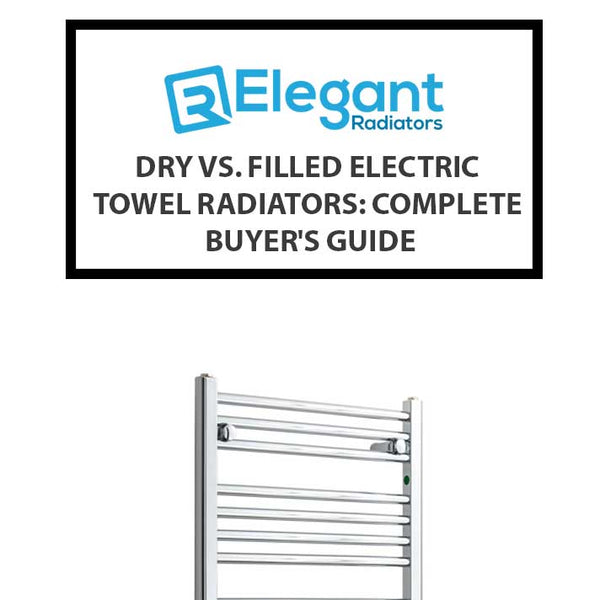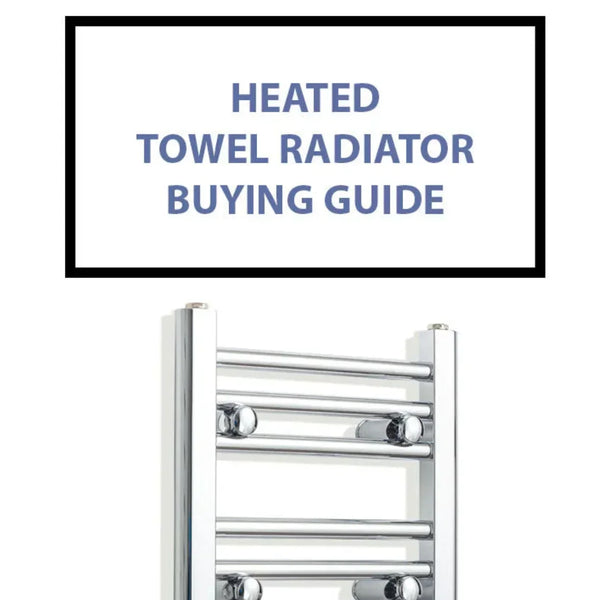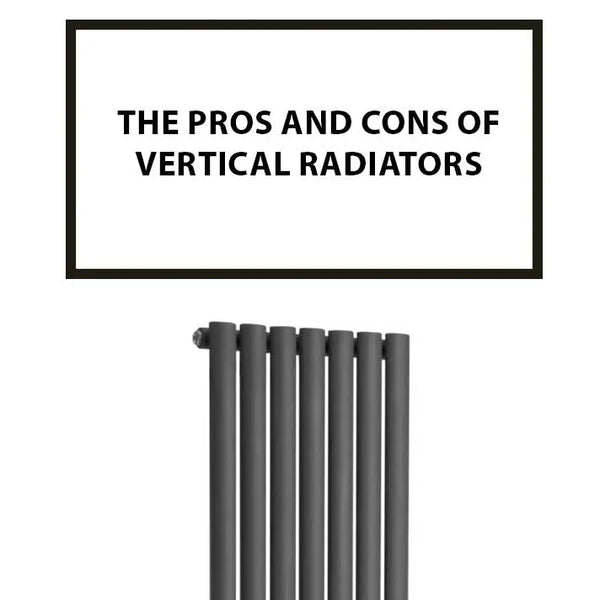How to Choose a Good Radiator: Expert Tips for Your Home

When upgrading a heating system, choosing the right radiator is not just about finding one that looks good on the wall. It is a decision that impacts energy efficiency, comfort, interior design and the long term value of a home. With so many styles, sizes and materials available, it can be easy to make a choice based on aesthetics alone. However, performance and compatibility with the heating system are equally critical. Whether you are a homeowner seeking to modernise your interior, a professional plumber fitting multiple homes, or a trade buyer sourcing radiators for commercial projects, understanding the fundamentals of radiator selection is essential.
Why Sizing and Heat Output Are the First Things to Consider
Every radiator needs to be sized correctly for the room it is heating. The key measurement used to determine this is the BTU or British Thermal Unit. This figure tells you how much heat is required to warm a room to a comfortable temperature. Calculating the correct BTU is not as simple as looking at room size. Several environmental factors come into play. These include ceiling height, the number and size of windows, the level of insulation, external wall exposure, the age of the building and even the floor material. Rooms with high ceilings or large single-glazed windows will lose heat faster and therefore require a higher BTU output. Likewise, extensions or loft conversions may have less insulation than standard rooms, so BTU calculations need to be adjusted accordingly.
When the BTU requirement is underestimated, the radiator will never be able to reach the desired temperature. The boiler may run longer in an attempt to compensate, increasing energy bills and wear on the system. On the other hand, oversizing by too much may lead to unnecessarily high upfront costs and wasted energy. A small oversize margin is fine to account for colder days, but it must be within reason. That is why using a reliable online BTU calculator or seeking guidance from a heating engineer is highly recommended. In the UK climate, getting BTU right means a more comfortable and efficient living space throughout the year.
How Radiator Orientation Affects Design and Function
Traditional radiators are typically horizontal and installed under windows to combat draughts and make use of otherwise dead wall space. However, modern interior design trends and more compact living spaces have led to a rise in the popularity of vertical radiators. These tall and narrow models are ideal for hallways, bathrooms and kitchens where horizontal space is limited. While both orientations can deliver similar heat output if sized correctly, their heat distribution differs slightly. Horizontal radiators distribute heat more evenly across the room at body level, while vertical models concentrate the heat in a narrower vertical column.
The choice between horizontal and vertical radiators should be guided by both space constraints and design goals. In a living room or bedroom where furniture placement matters, a vertical radiator may free up valuable floor space. In a bathroom or kitchen, a vertical towel radiator could double as both a heat source and a functional accessory. The key is to match the radiator’s output and orientation to the shape and usage of the room.
Valve Positioning and Pipe Centre Compatibility
One of the most common issues faced during radiator replacement is mismatched pipe centres. Pipe centres refer to the distance between the inlet and outlet pipes that connect the radiator to the central heating system. Standard UK radiators typically have a 50 mm or 400 mm pipe centre depending on the model, but designer radiators and towel rails often vary. Choosing a radiator with different pipe centres to the existing setup can lead to extra labour costs, visible pipe rerouting or installation delays.
Valves also need to be chosen carefully. Manual valves offer simple control but do not regulate temperature. Thermostatic radiator valves, commonly referred to as TRVs, automatically adjust the flow of hot water based on the room temperature. This prevents overheating, maintains consistent warmth and can significantly reduce energy consumption. TRVs are especially effective in homes with multiple rooms, as they allow each radiator to operate independently. When installing a new radiator, always verify whether the model requires angled, straight or corner valves and confirm their position in relation to the wall and skirting board.
The Role of Radiator Material in Heat Efficiency and Longevity
The material of a radiator directly affects how it performs. Mild steel is the most commonly used material and provides a good balance of heat retention, cost and design flexibility. It heats up relatively quickly and holds heat for a decent period, making it suitable for most standard UK homes. Steel radiators are also easy to produce in a wide variety of shapes and finishes, from sleek white panels to anthracite designer styles.
Aluminium is lighter and conducts heat faster, which means it heats up quickly and cools down just as fast. This makes aluminium radiators ideal for homes with modern boilers and smart thermostats where rapid response is beneficial. They also have lower water content, which improves system efficiency. Although aluminium radiators tend to be more expensive, the long-term energy savings and sleek appearance often justify the investment.
Cast iron is heavier and slower to heat but retains warmth for much longer, even after the heating is turned off. These radiators are best suited for period properties or rooms that benefit from a steady, gentle heat throughout the day. However, they require strong wall fixings or floor mounting and are typically more costly to install.
Matching Radiator Style to Your Interior
Radiators have evolved far beyond the plain white panel. Today’s models come in an array of styles, colours and textures designed to complement any decor. Gloss white remains the most efficient in terms of heat output, but darker tones such as matte black, anthracite grey and even coloured finishes like navy blue or forest green are increasingly popular in designer interiors. Chrome and mirrored finishes are common in bathrooms, although it is important to note that these reflective surfaces emit slightly less heat.
The finish also affects maintenance and appearance over time. Matte textures are easier to clean and less prone to showing fingerprints or limescale. Glossy or metallic surfaces may require regular polishing to maintain their shine. For clients seeking something bespoke, many brands offer custom RAL colour options. This allows homeowners and designers to match radiators to kitchen units, bathroom tiles or accent walls, creating a seamless and cohesive look throughout the property.
Electric and Dual Fuel Options for Year-Round Comfort
Traditional radiators rely on a central boiler system, but electric and dual fuel radiators are gaining popularity for their flexibility. An electric radiator operates independently of the central heating and is particularly useful in rooms that require occasional heating, such as guest bedrooms or home offices. It is also ideal for extensions, garden rooms and properties without gas access.
Dual fuel models offer the best of both worlds. During winter, they operate via the central heating system, and in warmer months, the built-in electric element can be activated independently. This means towels can stay warm in summer without turning on the whole heating system. For UK bathrooms, this year-round convenience is a major advantage. Installation of electric and dual fuel units must comply with electrical safety standards, including IP ratings and Part P certification, especially in wet zones.
Installation Factors You Should Not Overlook
Proper installation is just as important as product selection. Radiators must be securely mounted to support the weight of both the unit and the water inside. Wall type matters significantly. Drywall may require additional reinforcements, while masonry walls allow for more secure anchoring. Brackets must be level and spaced evenly to ensure proper alignment. Incorrect mounting can lead to air pockets, noise or reduced circulation.
For electric and dual fuel models, electrical access and spur placement should be planned in advance. Clearance for the element, visibility of the controls and proximity to light switches or other electronics must be considered. In bathrooms, the radiator must be installed outside of direct water zones unless it has a high enough IP rating. Poor planning in this area can delay installation or result in unsafe setups.
Professional Advice for Homeowners and Installers
Homeowners should not rely on visual appeal alone. A good-looking radiator that does not meet the BTU requirement or is poorly installed will cause more frustration than value. Always cross-check dimensions, material type, pipe centres and finish. Ask the supplier for BTU ratings and warranty information. Some radiators include valves and brackets, while others require these items to be purchased separately.
For plumbers and installers, product standardisation across multiple properties can improve efficiency and reduce stock complexity. Selecting models with standard pipe centres, compatible TRVs and durable coatings can streamline both installation and long-term maintenance. For trade projects, always consider warranty periods and availability of spare parts.
Frequently Asked Questions
1. What is BTU and why is it critical for choosing a towel rail?
BTU stands for British Thermal Unit and represents heat output per hour. Calculating the correct BTU for your bathroom ensures your towel rail or radiator delivers enough heat to maintain comfort without wasting energy. Skimping on BTUs can leave a room cold; oversizing can result in unnecessary cost and inefficiency.
2. How do I calculate the BTU requirement for my bathroom?
Measure room dimensions (length × width × height), determine glazing type, insulation level, exposure, and orientation, then use an online BTU calculator. For guidance, multiply room volume in cubic metres by 50–100 for a bathroom BTU estimate, adjusting further for factors like poor insulation or single glazing.
3. Why do chrome‑finished towel rails emit less heat?
A chrome finish has low emissivity and tends to reflect heat rather than radiate it. This causes a drop of 20–30% in heat output compared to painted finishes like white or anthracite. Therefore, if you plan to use a chrome rail as your main heat source, you must check the BTU rating for that specific finish or choose a physically larger model.
4. Can a towel rail heat the entire bathroom?
Yes—if its BTU output meets or slightly exceeds the room’s calculated requirement. Otherwise, towel rails are better suited for supplementary heating and drying towels rather than serving as the sole heat source.
5. What is ΔT50 and why does it matter for BTU ratings?
ΔT50 refers to testing conditions reflecting an average water temperature of 75 °C and room temperature of 20 °C. Since it is the UK industry standard, always choose towel rail ratings based on ΔT50. Models rated at ΔT60 or ΔT70 appear stronger but are not comparable and often misleading.
6. Should I choose single‑panel or double‑panel radiators?
Double‑panel units offer roughly 30% more heat output in the same footprint compared to single‑panel units, making them ideal for rooms with heat loss issues or limited wall space.
7. What material should my towel rail or radiator be made of?
Mild steel remains the industry standard due to affordability, design flexibility and efficiency. Aluminium heats up quickly but cools faster, offering responsive heating in well-insulated homes. Cast iron retains heat exceptionally well but is heavier and slower to respond.
8. How do thermostatic radiator valves (TRVs) save energy?
TRVs regulate water flow automatically based on room temperature. By adjusting flow in each room individually, TRVs help to reduce energy consumption by up to 17% annually and avoid overheating unused spaces.
9. How do I know when a radiator needs bleeding or maintenance?
If the top of a radiator feels cold while the bottom is hot, trapped air is likely the cause bleeding should solve it. Sediment or sludge build-up can cause cold patches too and may need a system flush. Regular annual maintenance helps avoid energy inefficiency and prolonged heat downtime.
10. Do I need professional help to install a towel rail?
Yes. Central heating rails must be plumbed by a qualified plumber, and electric or dual fuel models require installation by a Part P qualified electrician. Incorrect installation not only risks safety and warranty loss, but also may lead to leaks, faulty performance or code violations.







